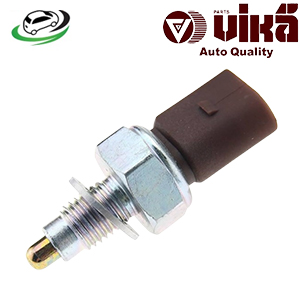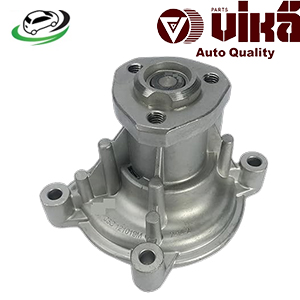-24%
Get Valve Cover Gasket 1.6MPI Volkswagen Golf III/Caddy II MPV/Lupo I/Polo III/Polo/Polo Variant/Vento (1H2) 030103483K
The valve cover gasket is a crucial component in a vehicle’s engine, playing a vital role in maintaining engine integrity and performance. It is responsible for sealing the valve cover to the top of the engine cylinder head, preventing oil from leaking out and ensuring that the engine operates smoothly. Over time, this gasket can wear out or become damaged, leading to potential engine issues. Understanding its function, importance, common problems, and the replacement process can help ensure your vehicle runs efficiently and reliably.
What is a Valve Cover Gasket?
The valve cover gasket is a seal that sits between the engine’s valve cover and the cylinder head. The valve cover itself is a metal or plastic lid that sits on top of the engine, protecting the valves, rocker arms, and other important components inside. These components are constantly in motion, and they need to be kept well-lubricated with engine oil. The valve cover gasket’s job is to keep the oil inside the engine, preventing it from leaking out.
Why is the Valve Cover Gasket Important?
The valve cover gasket is vital for two main reasons:
- Preventing Oil Leaks: The primary function of the valve cover gasket is to prevent engine oil from leaking out. Engine oil is crucial for keeping the engine’s moving parts lubricated and running smoothly. Without enough oil, parts can wear out faster, leading to engine damage.
- Keeping the Engine Clean: By keeping the oil inside the engine, the valve cover gasket also helps prevent dirt, debris, and other contaminants from getting into the engine. If dirt or debris enters the engine, it can cause damage to the internal components, reducing the engine’s performance and lifespan.
Signs of a Failing Valve Cover Gasket
Over time, the valve cover gasket can wear out, crack, or become brittle due to the constant exposure to heat and pressure inside the engine. When this happens, the gasket may start to leak, leading to several noticeable symptoms:
- Oil Leaks: The most obvious sign of a failing valve cover gasket is an oil leak. You may notice oil dripping from the engine or pooling underneath the car. In some cases, you might see oil on the valve cover itself or on nearby engine components.
- Burning Oil Smell: If the leaking oil drips onto hot engine parts like the exhaust manifold, it can produce a burning oil smell. This smell is often noticeable inside the car, especially when the engine is running.
- Engine Misfire: Oil leaking from the valve cover gasket can sometimes find its way into the spark plug wells. If oil gets on the spark plugs, it can cause them to misfire, leading to poor engine performance, rough idling, or difficulty starting the car.
- Low Oil Levels: If you’re consistently adding oil to your engine, but the level keeps dropping, it could be due to a leaking valve cover gasket. Low oil levels can cause engine overheating and serious damage if not addressed.
Maintaining the Valve Cover Gasket
Maintaining your valve cover gasket is key to keeping your engine in good condition. Here are some tips to help extend its life:
- Regular Oil Changes: Regular oil changes help keep the engine clean and reduce the risk of contaminants that could wear out the gasket. Clean oil also helps the gasket maintain its seal better.
- Check for Leaks: Periodically check around the valve cover for signs of oil leaks. If you notice oil where it shouldn’t be, it could indicate a problem with the gasket.
- Keep the Engine Cool: Overheating can cause the gasket to become brittle and crack. Make sure your cooling system is working properly to prevent the engine from getting too hot.
- Inspect During Maintenance: When your car is in for regular maintenance, ask the mechanic to inspect the valve cover gasket. Early detection of wear and tear can prevent more serious issues down the road.
Replacing the Valve Cover Gasket
If your valve cover gasket is leaking or showing signs of wear, it’s important to replace it promptly. Replacing a valve cover gasket is a relatively straightforward process, but it does require some basic tools and mechanical know-how.
- Remove the Valve Cover: The first step is to remove the valve cover. This usually involves removing some bolts or screws that hold it in place. Depending on your car, you may need to move other components out of the way to access the valve cover.
- Remove the Old Gasket: Once the valve cover is off, you can remove the old gasket. It’s important to clean the surface of the valve cover and the cylinder head thoroughly to remove any old gasket material or oil residue.
- Install the New Gasket: After cleaning, place the new gasket onto the valve cover. Make sure it’s properly aligned and seated. Some gaskets may require a small amount of gasket sealant to hold them in place, but not all gaskets do.
- Reinstall the Valve Cover: Carefully place the valve cover back onto the engine and tighten the bolts or screws to the manufacturer’s specifications. It’s important not to overtighten, as this can damage the gasket or the valve cover.
- Check for Leaks: After replacing the gasket, start the engine and check for any signs of oil leaks around the valve cover. If everything looks good, the repair is complete.
Follow us on Facebook for more parts.



